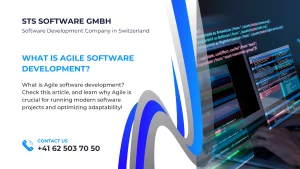I. Introduction
In the fast-paced world of enterprise application development, where technological advancements and user-centric experiences reign supreme, the challenge of optimizing budgets while fostering innovation stands as a critical balancing act. Effective cost management approaches in this realm are not merely about financial constraints; they are strategic tools that wield the power to shape the success and longevity of a project.
II. Effective Cost Management Approaches
A. Cost Estimation and Budgeting Techniques
In the realm of enterprise application development, the careful and thorough examination of cost estimation methods stands as a critical pillar for successful project execution. These methods encompass a broad spectrum of approaches, from historical data analysis to sophisticated algorithms designed to predict and allocate resources effectively. Leveraging past project metrics and industry benchmarks, professionals in this field meticulously assess various factors, including the scope of the project, resource requirements, technological intricacies, and potential risks.
Budgeting techniques, when intricately intertwined with cost estimation, form the cornerstone of prudent financial planning. It involves the judicious allocation of resources across different phases of the application development lifecycle. By delineating clear and well-defined budgetary boundaries, organizations can mitigate the risks of unexpected expenditures and ensure that the allocated resources align with the project’s objectives.
Moreover, the utilization of best practices plays a pivotal role in the success of meticulous budget allocation. Techniques such as parametric estimating, analogous estimating, and bottom-up estimating empower project managers to make informed decisions by relying on historical data and expert judgment. These methods aid in constructing comprehensive budgets that encompass not only the direct costs associated with development but also the indirect expenses like infrastructure, maintenance, and potential contingencies.
Furthermore, the adoption of agile and iterative development methodologies has revolutionized cost estimation and budgeting in enterprise application development. Agile frameworks promote adaptability and flexibility, allowing teams to embrace changes throughout the development process. This adaptability enables a more responsive approach to cost management, as budgets can be adjusted in tandem with evolving project requirements, ensuring resources are optimally allocated for maximum efficiency.
Additionally, the integration of sophisticated project management tools and software has streamlined the process of cost estimation and budgeting. These tools facilitate real-time tracking and monitoring of expenses, enabling stakeholders to have a comprehensive view of the project’s financial health. By leveraging these technological advancements, organizations can proactively identify potential cost overruns or deviations from the budget, allowing for timely corrective actions to be taken.
B. Resource Optimization and Efficiency
In the realm of effective cost management within enterprise application development, resource optimization and efficiency stand as pivotal strategies. These approaches constitute a multifaceted methodology focused on augmenting productivity and curbing wastage, thereby fostering heightened resource utilization and overall operational efficiency.
Resource optimization embodies a comprehensive spectrum of practices designed to extract the utmost value from available resources. This encompasses a thorough evaluation of existing assets, both tangible and intangible, such as human capital, technological infrastructure, and financial allocations. Through meticulous analysis and strategic allocation, enterprises can align resources with the demands of application development, streamlining processes and eliminating superfluous expenditures.
Efficiency, as a complementary facet, centers on the judicious utilization of resources to accomplish objectives with precision and economy. It involves the integration of streamlined workflows, automation, and the adoption of innovative technologies to expedite development cycles. By minimizing redundant tasks and optimizing workflows, organizations not only conserve resources but also enhance the quality and speed of application delivery.
At its core, the synergy between resource optimization and efficiency orchestrates a harmonious balance between maximizing productivity and minimizing resource consumption. This balance is pivotal in achieving sustainable cost management while ensuring that the development process remains agile and adaptive to changing market dynamics.
Strategies encapsulating these principles encompass a range of methodologies. This includes the implementation of lean principles, where continuous improvement drives the identification and eradication of inefficiencies in processes. Agile methodologies, with their iterative approach and emphasis on collaboration, further bolster efficiency by fostering adaptability and responsiveness to evolving project requirements.
Moreover, embracing cloud computing and virtualization technologies plays a pivotal role in resource optimization. These technologies offer scalable and flexible infrastructure, enabling businesses to dynamically allocate resources based on demand. This not only reduces capital expenditures but also enhances agility in responding to fluctuating needs within the development lifecycle.
Furthermore, fostering a culture of innovation and knowledge sharing within an organization significantly contributes to resource optimization and efficiency. Encouraging cross-functional collaboration and providing avenues for continuous skill enhancement among employees cultivates a dynamic workforce capable of driving efficiency gains through novel ideas and improved practices.
C. Risk Management and Contingency Planning
In the realm of effective cost management within enterprise application development, one crucial aspect is the meticulous attention given to Risk Management and Contingency Planning (RMCP). This facet involves an in-depth analysis aimed at identifying potential risks that might arise during various phases of application development. These risks can encompass a wide array of possibilities, from technical challenges and resource constraints to unforeseen market shifts or regulatory changes.
The initial step in RMCP involves a comprehensive assessment to anticipate and recognize potential risks. This examination delves into various dimensions, encompassing both internal and external factors that could impact the development process and eventual costs. Internal factors might include team dynamics, skill gaps, or infrastructure limitations, while external factors could entail evolving market trends, competitive landscape shifts, or changes in regulatory compliance requirements.
Upon the identification of these potential risks, the subsequent crucial step involves the formulation of effective contingency plans. These plans serve as strategic frameworks designed to proactively address and mitigate the impacts of identified risks. Contingency plans are not merely reactionary measures but rather well-thought-out strategies crafted to minimize disruptions and cost overruns, ensuring the smooth continuity of the application development process.
Developing contingency plans involves a multidimensional approach. It necessitates a keen understanding of the identified risks and their potential ramifications. Moreover, it requires the involvement of various stakeholders including project managers, developers, quality assurance teams, and relevant subject matter experts. Collaboratively, these stakeholders work towards devising proactive strategies to either prevent the occurrence of risks or minimize their impact if they do materialize.
Contingency plans typically encompass a spectrum of actions and alternatives tailored to specific risk scenarios. These plans often include diversification of resources, establishment of fallback options, reallocation of tasks or resources, incorporation of buffer timelines, and strategic renegotiation or reevaluation of contracts with vendors or partners.
Furthermore, an integral part of effective contingency planning involves regular review and reassessment of these plans throughout the application development lifecycle. This continuous evaluation allows for the identification of emerging risks and the adaptation of contingency strategies accordingly. It ensures that the plans remain relevant and effective amidst the evolving landscape of technological advancements, market dynamics, and other external factors.
The implementation of RMCP within enterprise application development is not solely about reacting to risks as they arise but is also deeply rooted in a proactive and preemptive approach. By embedding risk assessment and contingency planning as integral components of the development process, organizations can significantly enhance their ability to navigate unforeseen challenges while minimizing the financial impacts associated with potential disruptions.
Moreover, a well-structured RMCP framework contributes to fostering a culture of adaptability and resilience within the development team. It encourages a proactive mindset, where team members are empowered to anticipate and address risks collaboratively. This fosters a sense of preparedness and agility, enabling the team to respond swiftly and effectively to any unforeseen circumstances that might arise during the course of application development.
D. Outsourcing and Vendor Management
Outsourcing and vendor management represent pivotal facets within the realm of effective cost management strategies in enterprise application development. The integration of these practices delves into a nuanced landscape encompassing diverse advantages and drawbacks, shaping the trajectory of projects and their overall outcomes.
Outsourcing, a cornerstone of contemporary business strategies, involves delegating specific tasks or functions of a project to external entities or third-party service providers. This approach is heralded for its potential to yield cost savings, primarily through leveraging the comparative advantage of labor costs in different geographic regions. By tapping into global talent pools, companies often find reduced operational expenses without compromising quality. Additionally, outsourcing allows firms to focus on their core competencies while accessing specialized expertise and resources, thereby enhancing overall project efficiency.
However, the practice of outsourcing is not devoid of challenges. One prominent concern revolves around the potential loss of control and visibility over crucial aspects of the project. Communication barriers, cultural differences, and time zone disparities may impede seamless collaboration, leading to misalignment of expectations and deliverables. Furthermore, dependency on external vendors can introduce risks related to data security, intellectual property protection, and compliance issues, demanding robust contractual agreements and vigilant oversight to mitigate these vulnerabilities.
Effective vendor management emerges as a vital counterpart to outsourcing, encompassing the processes and strategies employed to oversee and optimize relationships with external service providers. It involves meticulous selection criteria, rigorous evaluation, and clear delineation of roles and responsibilities through well-defined service level agreements (SLAs). By establishing transparent communication channels and fostering mutual understanding, vendor management endeavors to align objectives, mitigate risks, and maintain accountability throughout the project lifecycle.
Striking a balance between the advantages and potential pitfalls of outsourcing requires a strategic approach that amalgamates cost considerations with quality assurance. Enterprises must diligently evaluate the scope and nature of tasks to be outsourced, identifying areas where external expertise can augment internal capabilities without compromising critical aspects such as security, compliance, and innovation. Additionally, fostering a collaborative culture between in-house teams and external vendors fosters a symbiotic relationship, enhancing the likelihood of successful project outcomes.
III. Future Trends and Innovations in Cost Management
As the landscape of enterprise application development continues to evolve, the methods and strategies for managing costs within this realm are also undergoing significant transformations. The ever-changing technological landscape, coupled with the continuous emergence of innovative solutions, is driving a profound impact on how organizations optimize their budgets and allocate resources for application development.
One of the pivotal aspects anticipated in the evolution of cost management for enterprise application development is the increasing reliance on automation and artificial intelligence (AI). These technologies are revolutionizing traditional cost management approaches by enabling predictive analytics, intelligent resource allocation, and automated optimization of development processes. By leveraging AI-driven algorithms, organizations can gain invaluable insights into cost trends, identify potential areas for cost reduction, and streamline their budget allocation for application development initiatives.
Furthermore, the integration of cloud-based solutions is poised to be a game-changer in cost management strategies for enterprise application development. Cloud computing offers a flexible and scalable infrastructure that allows organizations to optimize costs by paying only for the resources they utilize. The pay-as-you-go model of cloud services enables cost-efficiency by eliminating the need for substantial upfront investments in hardware and infrastructure, thereby allowing companies to align their expenses more closely with actual usage.
In addition to technology-driven advancements, a shift towards agile methodologies and DevOps practices is profoundly impacting cost management in application development. Agile methodologies emphasize iterative development and continuous feedback, enabling teams to respond swiftly to changes in requirements, thereby reducing the risk of costly rework due to misunderstood or changing needs. DevOps practices, on the other hand, promote collaboration and automation across development and operations teams, leading to faster delivery cycles and more efficient resource utilization, consequently minimizing unnecessary expenses.
Moreover, the rising significance of cybersecurity in application development is influencing cost management strategies. With the increasing frequency and sophistication of cyber threats, organizations are allocating more resources towards implementing robust security measures during the development phase itself. While this may initially entail additional expenses, the proactive integration of security measures into the development process can mitigate the risk of costly security breaches in the future, thereby potentially saving significant expenses associated with remediation and reputational damage.
Another noteworthy trend is the proliferation of low-code and no-code development platforms, which are democratizing the process of application development. These platforms empower citizen developers and non-technical personnel to create applications without extensive coding knowledge, significantly reducing the dependency on specialized development resources. Consequently, organizations can optimize costs by leveraging existing talent within the company for application development, thereby reducing the need for external resources and cutting down development expenses.
Furthermore, the concept of value-based cost management is gaining prominence in enterprise application development. Instead of solely focusing on minimizing costs, organizations are emphasizing the delivery of value to stakeholders while maintaining cost-efficiency. This approach involves aligning development initiatives with strategic business goals, prioritizing features that yield the highest value, and continuously evaluating the return on investment for each aspect of application development.
Additionally, the advent of modular and microservices-based architectures is reshaping cost management approaches in application development. These architectures enable the creation of applications composed of smaller, reusable modules or services, facilitating easier maintenance, scalability, and cost-effective updates. By modularizing applications, organizations can allocate resources more efficiently, optimize development costs, and adapt more swiftly to changing business requirements without overhauling the entire application architecture.
Moreover, the increasing adoption of open-source technologies is driving cost optimization in enterprise application development. Open-source software offers cost-effective alternatives to proprietary solutions, reducing licensing expenses and fostering innovation through community-driven collaboration. Leveraging open-source technologies enables organizations to allocate their budget towards customization and enhancements tailored to their specific requirements, thereby optimizing costs without compromising on functionality or quality.
IV. Conclusion
Summarizing the key insights discussed, emphasizing the significance of optimizing budgets without compromising innovation in enterprise app development.
In the dynamic sphere of enterprise application development, strategic cost management isn’t just about curtailing expenses; it’s about maximizing value. By understanding and implementing effective cost optimization approaches, businesses can not only navigate budget constraints but also foster innovation and drive impactful solutions in the digital realm.



